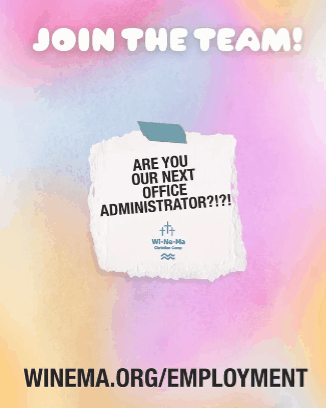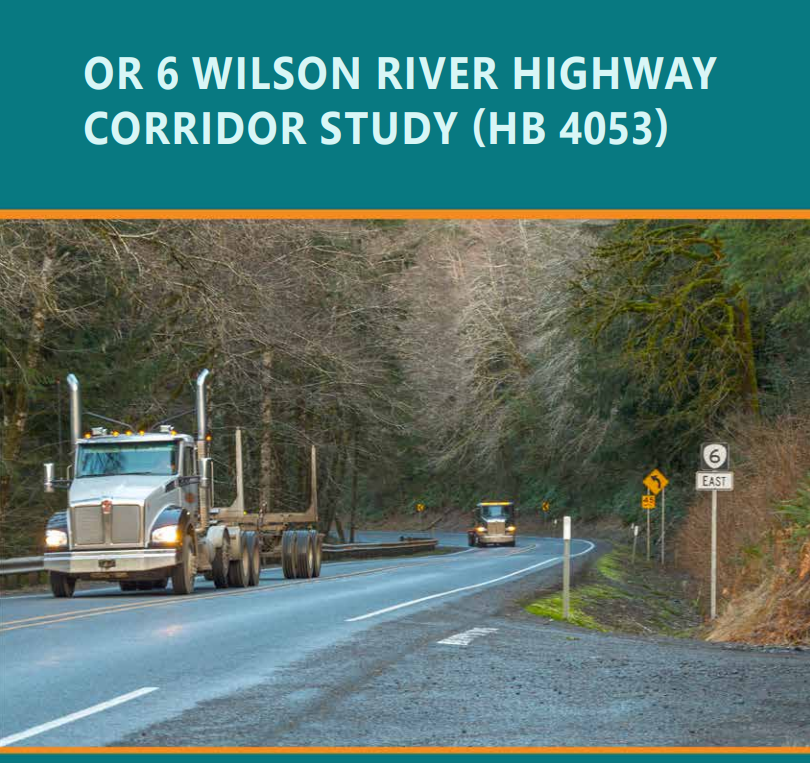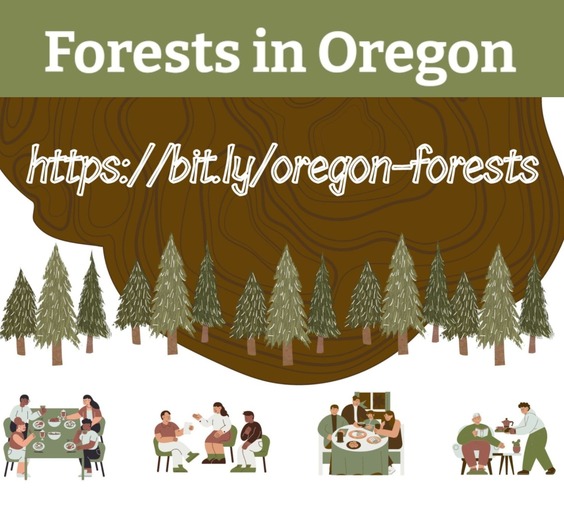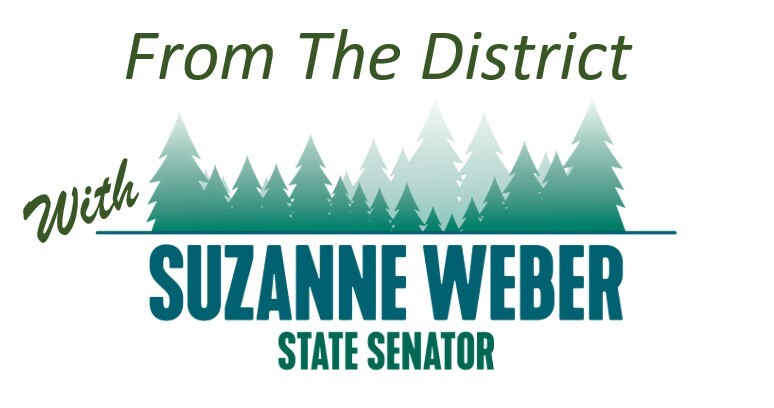By State Sentator Suzanne Weber
September seems to have flown by. My colleagues and I came together in the Capitol for legislative days last week. While we were there for committee meetings and informational hearings, we also had the task of confirming Governor Kotek’s appointees. However, our Senate confirmation session was held not in the Senate chamber, but in one of the committee rooms. This is due to the continued construction going on at the Capitol. We all look forward to the day that the structural updates are complete.
The Capitol Accessibility, Maintenance and Safety project was approved by the 2016 Legislative Assembly to address Americans with Disabilities Act deficiencies; at-risk mechanical, electrical and plumbing systems; and security and life-safety issues in the Oregon State Capitol building.
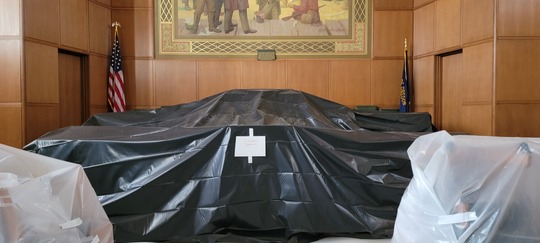
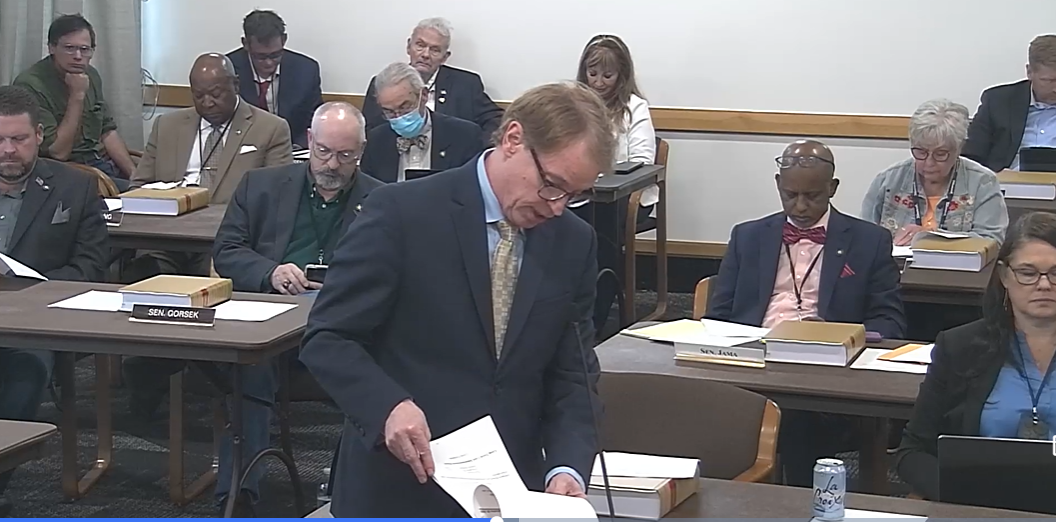
Whether you live in Tillamook county or come to visit, most of you know the dangerous journey it is to travel down Hwy 6. When I was in the House of Representatives one of my first priorities was to do what I had within my power to make Hwy 6 safer for everyone. With that in mind, I, along with my colleagues in both the House and the Senate worked together to pass HB 4053 during the 2022 regular session. The bill required the Department of Transportation to conduct a review of Oregon Route 6 and present the report to the Joint Committee on Transportation no later than September 15th 2023.
The report is in and I want to compliment ODOT on the thoroughness of putting it together. There is a lot that needs to happen, and the report points it out. The bill and then the report was just the start or making real and meaningful progress toward fixes.
Milepost 31 and 35 where the most damage to the Highway is, is going to be a very expensive endeavor to fix. But we need to make sure that that highway is safe. Not only for those that live and work here, but for those that travel to visit the coast.
Everyone that travels that highway on a constant basis should read this report.
OR 6 Wilson River Highway Corridor Study (oregon.gov)
Another big portion of this safety issue is the lack of ability to call for help. We have been working hard to make sure that cellular coverage becomes more available. While I understand this is a double edge sword, we simply need the ability to call for help when there is an emergency.
While I seek solutions to our critical roadways, it is important to recognize the challenges faced by our Department of Transportation. We were recently notified that all regions are facing level of service reductions.
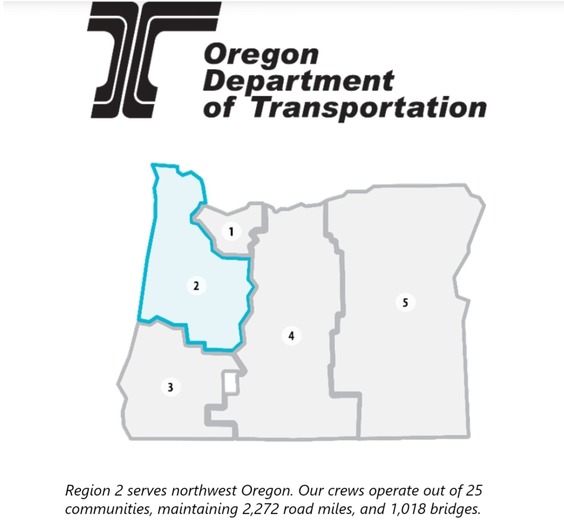 Oregon Department of Transportation Maintenance & Operations Service Levels: 2023-2025
Oregon Department of Transportation Maintenance & Operations Service Levels: 2023-2025
The majority of ODOT funds for day-to-day operations + maintenance come from the gas tax, which because of increased vehicle fuel efficiency and increased numbers of hybrid and electric vehicles, is declining. That decline, coupled with increased costs (inflation, labor cost increases, material costs increases), means that, despite their very best efforts over the past few years, the only way ODOT has found to further reduce costs and live within budget is by reducing services. These reductions have already started and will become increasingly visible and tangible in the coming months.
Because ODOT has historically maintained a relatively high level of service, I wanted to share this information with you as far in advance as possible of the material consequences of reductions.
What is “Operations + Maintenance”? In its simplest form, Operations and Maintenance is everything that IS NOT capital improvements/capital construction projects. Importantly, operations and maintenance is work largely performed by ODOT staff/crews such as:
- DMV (field offices, processing staff, call centers)
- Central services (HR, IT, procurement/contracting)
- Roadway maintenance (incident response/roadside assistance, pothole patching, lane striping/marking, guardrail repair, litter/graffiti removal, snow plowing)
What is being reduced and what are the impacts? Because of the Legislature’s action last session, DMV funding is stable (for now) and therefore DMV services won’t be reduced this biennium. They are reducing services elsewhere, which includes roadway maintenance functions noted above. Roadway maintenance reductions are largely in three categories:
- Winter maintenance (plowing, deicing)
- Roadside maintenance (litter, graffiti removal)
- Pavement maintenance (striping on low-volume roads, preventive pavement repair)
The consequences of these reductions will be visible; folks will see more potholes and ruts on the road, along with more trash and debris in bike lanes, medians, and along highways. Folks may spend more time waiting for roads to reopen after a crash, see lowered speed limits because of poor pavement conditions, and fewer ODOT responders on the road. During winter, folks will notice more snow and ice build-up, more chain requirements, longer delays and fewer open roads.
How were these reduction decisions made? Over the past few years ODOT has cut costs where they could, focusing on increasing efficiency and minimizing impacts to customer service. At the point where they could not cut any more without impacting service levels, they have made the difficult reduction decisions noted above. They focused on service reductions that preserve service for the most people, minimize safety risks to the best of ability, and equalize the impacts across the state to the extent possible.
They have assured me they will continue to look for opportunities to increase efficiency and cut costs while minimizing impacts to customer service levels. However, unless and until structural changes are made to modernize transportation funding in Oregon, it is reasonable to expect to see this trend continue.
To learn more or to view regional fact sheets please go to: Oregon Department of Transportation : Transportation Funding in Oregon : About Us : State of Oregon
- Statewide
- Region 1 (Portland metro area)
- Region 2 (Willamette Valley and North Coast)
- Region 3 (Southern Oregon)
- Region 4 (Central Oregon)
- Region 5 (Eastern Oregon)
|
|

I had a wonderful time at Weyerhaeuser’s seed nursery in Turner. While the nursery is not within our district, they certainly provide many thousands of the seedlings that get planted in our district as well as the rest of the nation. Oregon is the number one producer of many of our nation’s specialty crops and forest products. Producing world-class products requires responsible management, innovation, and sustainability, while balancing the challenges posed by extreme weather, fire, and pests. This tour showcased a critical aspect of forest and community restoration: tree seedling production |
 |
|
|
The Oregon Department of Forestry and the Board of Forestry oversee many forests in Oregon. Now they are updating their strategic plan for the forests. ODF and the Board’s plan includes the mission, values, and goals that they use to make decisions about our state’s public and private forests. It was last updated in 2011.
ODF and the Board are partnering with Oregon’s Kitchen Table to hear from people across the state about:
- How are you connected to forests in Oregon?
- How would you like to be more connected to forests? What could help make those connections possible for you?
- What do you hope to see for the future of forests in Oregon?
Your input will also help the state make decisions about forests in Oregon. Please share your thoughts in this survey (https://bit.ly/oregon-forests) through October 9th.
|
|
Around the District
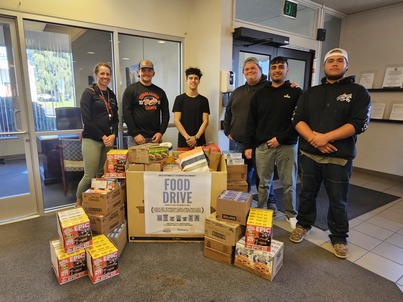 |
I had the good fortune to happen upon a group of Wilson River High school students and Rotarian Christy Hartford as they were out for pickup and delivery during the Tillamook Rotary Food Drive this month. |
|
|

An exciting time for Habitat for Humanity. They now officially own their ReStore building in Tillamook! I was able to attend the ribbon cutting and enjoy the celebration alongside everyone that worked so hard to make this happen. Well done!
|
|
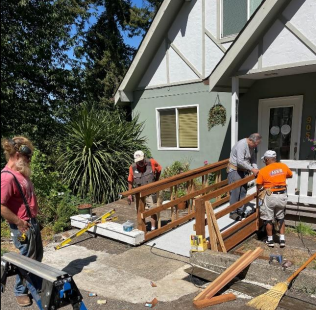
Meanwhile, in Columbia County, Habitat for Humanity is seeing great success for community members. Whether it is helping purchase a home, or build a ramp for accessibility, they are making impact and you can too. Please take a look at their latest newsletter for more stories of how Habitat for Humanity is making a difference. |
|
|
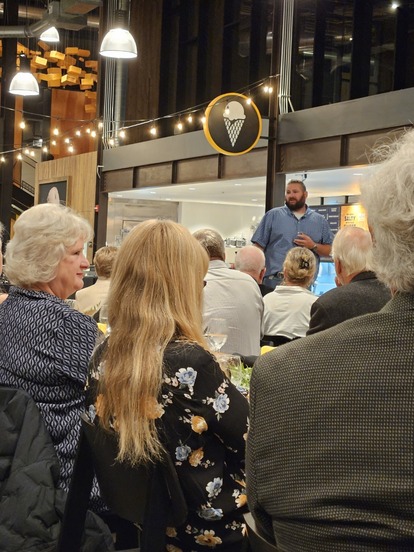 |
I was able to get back to Tillamook to enjoy an evening among friends at the Oregon People’s Utility District Association President’s Gala held at the Tillamook Creamery. |
|
|

Tillamook County businesses and organizations that could use financial support for marketing and/or facility improvements should look into the five Tillamook Coast Visitors Association grants opening October 1.
“The Tillamook Coast Visitors Association is continuing its promise to invest transient lodging tax dollars back into our community,” says Nan Devlin, TCVA Executive Director. “We have five generous grant programs and we’re looking forward to reviewing all of the promising projects.”
Tourism Marketing Grants: Due Nov. 15
Tillamook County tourism-related businesses and nonprofits are eligible for up to $5,000 in tourism marketing grants. The total grant pool of $50,000 is made possible by the portion of the transient lodging tax funds managed by TCVA. Applications open Oct. 1, with a Nov. 15 submission deadline.
Eligible businesses include retail stores, restaurants, lodging, outdoor recreation, food producers and nonprofits that conduct tourism-related programs. Considerations include whether the project supports sustainable tourism and whether the goals and budget are realistic.
Rockaway Beach offers a marketing grant, as well. Applicants that own tourism-related businesses and nonprofits are eligible for up to $3,000. The $30,000 fund is available Oct. 1, with a deadline of Nov. 15.
Manzanita’s Off-Season Marketing Grant is returning this year after a pause during Covid. This $20,000 fund will also launch Oct. 1. Tourism businesses and nonprofits operating in the city of Manzanita can apply for up to $2,000.
Tourism-Related Facilities Grant: Due Dec. 15
A separate $400,000 grant is made possible by the portion of transient lodging tax funds overseen by the Tillamook County Board of Commissioners. Applicants can ask for up to $75,000 for tourism-related facilities projects. The grant process, managed by TCVA, opens Oct. 1 and has a Dec. 15 deadline for submission.
Any city, county or other local government, and nonprofit organization is eligible to apply so long as it conducts tourism-related activities or services in Tillamook County (excluding county-lead or sponsored projects). Eligible projects include:
- A conference center, convention center or visitor information center.
- Other improved real property that has a useful life of ten (10) or more years and has a substantial purpose of supporting tourism or accommodating tourist activities.
- A “tourism-related facility” may also include a master plan, engineering study or architectural work reasonably required to locate, design, or construct a facility.
- “Visitor information center” means a building, or a portion of a building, the main purpose of which is to distribute or disseminate information to tourists.
Rockaway Beach Façade Improvement Grant: Due Dec. 15
In addition, the City of Rockaway is rolling out a new façade improvement grant for 2023-24. Their $200,000 pot of funds is for businesses serving visitors in the Rockaway Beach area. Eligible applicants must operate in the Rockaway Beach area or serve visitors in the Rockaway Beach area, and be a business serving visitors and the tourism industry. Maximum grant amount is $20,000.
To apply:
To apply for TCVA’s facilities or marketing grants, or Manzanita’s marketing grant, visit www.tillamookcoast.com/grants. For more information on Rockaway’s marketing and facilities grants, go to www.visitrockawaybeach.org/grants. For additional questions, contact TCVA Finance and Grant Manager Marni Johnston at 503-842-2672, ext. 3.
|
|
 |
Join me on YouTube or Soundcloud for this months episode of From the District. We discuss September legislative days, the upcoming short session, the Hwy 6 Report, Measure 110 reform, and more. |
|
|
 |
Oregon Parks and Recreation Department (OPRD) is accepting public comment on three proposed rule changes until November 3 at 5 PM.
Proposed rule changes include:
- Park Exclusions. Updates to the rules for excluding individuals from Oregon State Parks who commit violations, including endangering the safety of visitors and staff (OAR 736-010-0020 and 736-021-0040). The proposed updates will clarify the process for excluding individuals from Oregon State Parks who commit rule violations that endanger the safety of visitors, staff or park resources; provide clear information on how excluded individuals may request an appeal and how the appeals will be processed. A public hearing will be held on Monday, October 30 at 2 PM. Register for the hearing at: https://us06web.zoom.us/webinar/register/WN_eWNdOpNMSlqyK1hWS2RExg
- Marine Plant Collecting. Updates to rules for collection of marine plants and macroalgae in marine reserves and marine protected areas. (OAR 736-021-0090). Updates to Oregon’s Territorial Sea Plan earlier this year changed regulations and management practices in certain protected areas. The department’s proposed rule changes will allow for collection of marine plants and macroalgae in marine protected areas if allowed under management plans for the area. Proposed rules also eliminate outdated requirements for enrolled members of federally recognized tribes in Oregon to seek a permit before collecting marine plants along the ocean shore. Virtual Public hearing: Thursday, October 26, 2 PM: Registration required at https://us06web.zoom.us/webinar/register/WN_RVGhrw-KR9eYDdaTobepew
- ATV Definitions. Change to definitions for ATV classes to remove the description of ATV classes from the rule due to frequent updates to that information, which require a rule change process for each change. Instead of describing each class in OAR 736-004-0015, the rule would refer to the definition of ATV (All-Terrain Vehicles) in the Oregon Vehicle Code. The definitions are listed under ORS.801.190; ORS.801.193 and ORS.801.194. The proposed change would allow the agency to maintain a greater level of accuracy in its rules. The most recent change in ATV definitions was adopted by the Legislature in Senate Bill 899.
OPRD is accepting comments until 5 p.m. Nov. 3, 2023, and they can be made online, at a public hearing (if scheduled), in writing or via email.
- Online: https://www.oregon.gov/oprd/PRP/Pages/PRP-rulemaking.aspx
- In writing: Oregon Parks and Recreation Department, attn.: Katie Gauthier, 725 Summer St NE, Suite C, Salem OR 97301
- Email: OPRD.publiccomment@oprd.oregon.gov.
After reviewing public comments, agency staff plan to present final amended rules for consideration by the Oregon State Parks and Recreation Commission at its November 2023 business meeting.
The full text of the amendment to Oregon Administrative Rules are available online at https://www.oregon.gov/oprd/PRP/Pages/PRP-rulemaking.aspx.
|
|
I really appreciated getting to visit with constituents over this month and hearing about issues that are important to them. It really helps going into session with that information at the ready.
If you have concerns or questions, now is the time to reach out to visit with me. If you wait until the session, I am inundated with meetings and the quality and quantity of time I have available is much more restricted.
Please make sure when emailing or calling to leave you name, where you are from, and phone number.
|
|
Capitol Phone: 503-986-1716 District Phone: 503-300-4493
Capitol Address: 900 Court St. NE, S-405, Salem, Oregon 97301
Email: Sen.SuzanneWeber@oregonlegislature.gov
Website: https://www.oregonlegislature.gov/weber/


